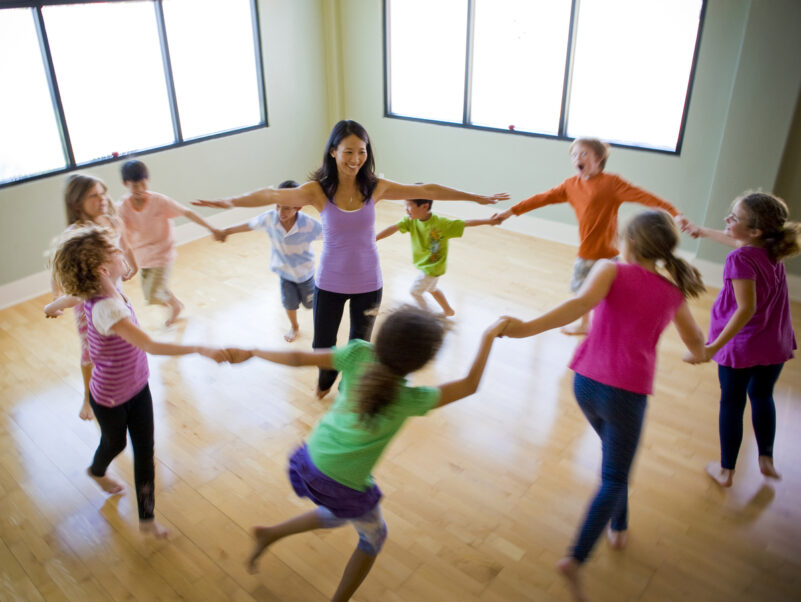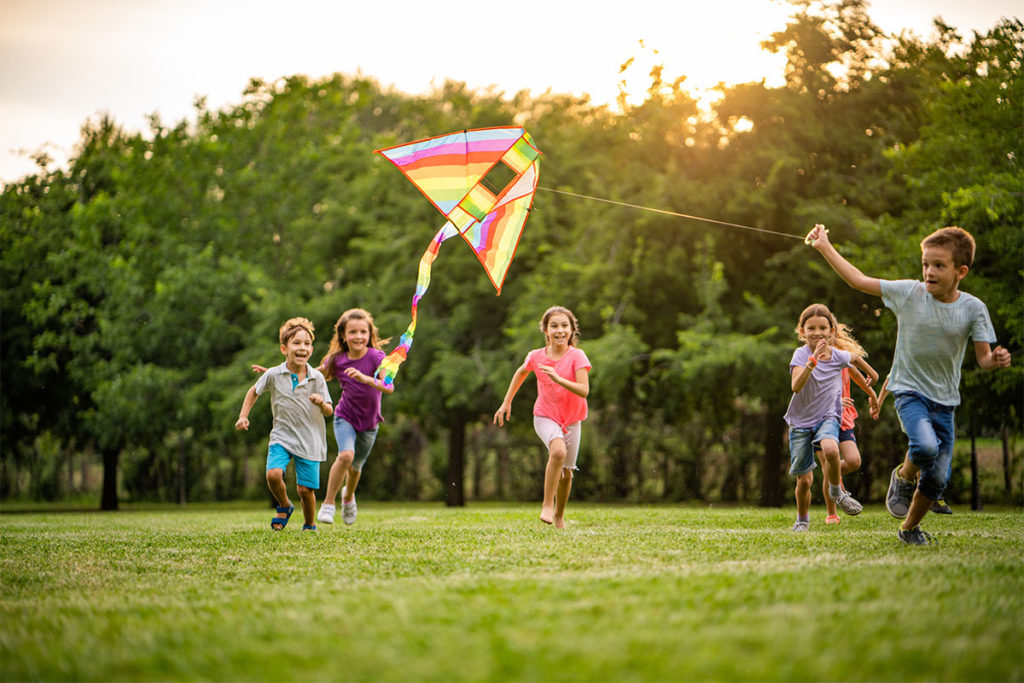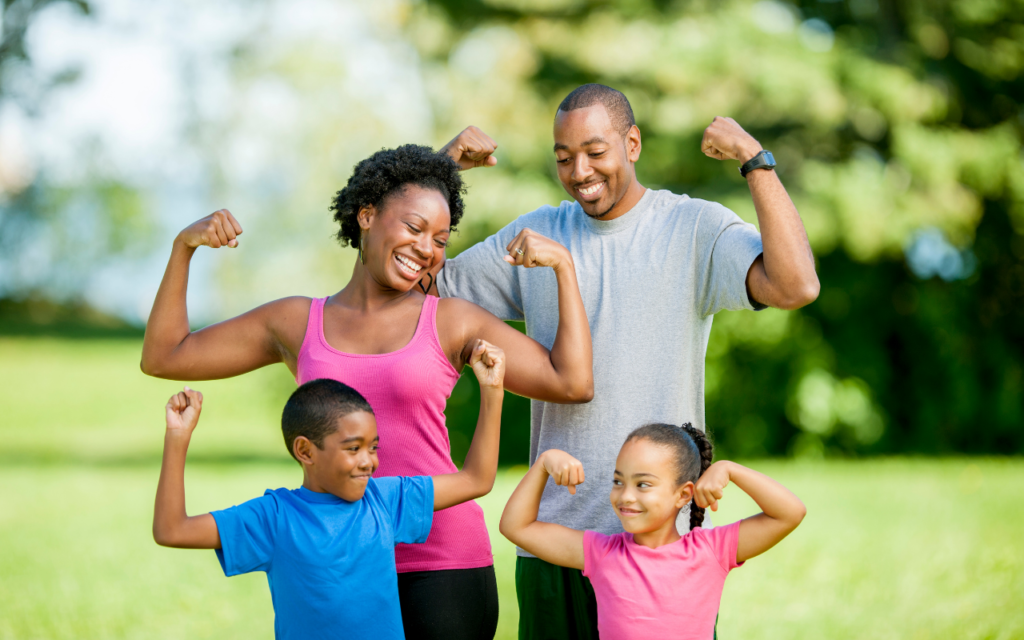Strong Foundations in Children’s Fitness and Wellness

Children’s fitness and wellness are among the most important yet overlooked foundations of lifelong health. While youth face a wide range of modern challenges; from increased sedentary time and digital distractions to poor nutrition and reduced sleep, there is also a growing body of research offering clear solutions. Movement, mindfulness, strength training, family routines, and inclusive environments all play critical roles in shaping healthier generations.
This article highlights several of today’s “hot topics” in kids’ fitness and wellness, summarizing key research findings and practical strategies in short, focused pieces. Each mini-article explores one area where families, schools, and professionals can make a measurable difference in children’s lives. Together, they provide a snapshot of the evidence base and real-world applications that can guide healthier choices for children and adolescents.
Physical activity as prevention
One critical foundation of children’s health is recognizing that movement itself functions as medicine, with lifelong benefits for body and mind. Regular movement in childhood is one of the most effective “vaccines” we have against lifelong disease. Meeting daily activity guidelines improves cardiorespiratory fitness, strengthens bones, and reduces risk factors for obesity and type 2 diabetes later on. The CDC and WHO converge on a simple, memorable target: kids and teens should accumulate at least 60 minutes of moderate-to-vigorous physical activity (MVPA) daily, with vigorous work and muscle-strengthening on several days.
Prevention is also behavioral: active kids are more likely to become active adults. Embedding a norm of movement early; walking to school, active play, sports and dance, creates protective routines that buffer stress and improve sleep, mood, and classroom readiness.
School integration: movement breaks that boost learning
Another pressing issue is how schools can weave movement into the academic day, using short activity breaks to sharpen focus and improve learning outcomes. Short “brain breaks” and physically active lessons can elevate time-on-task and executive control without sacrificing academics. Meta-reviews report small but consistent gains in classroom behavior and attention when teachers insert 5–15 minute bouts of movement between lessons.
Design matters: breaks that raise heart rate, are led confidently, and occur daily tend to produce stronger effects. Schools that plan for space, safety, and teacher support see the biggest wins. And students return to learning more focused.

Pediatric recommendations: the 60-minute rule
Guidelines from leading pediatric organizations highlight a third cornerstone: ensuring children achieve at least 60 minutes of moderate-to-vigorous activity daily. For ages 6–17, aim for 60+ minutes daily of MVPA, mostly aerobic (running, cycling, games), with vigorous activity and muscle- and bone-strengthening at least three days per week. Preschoolers should be active throughout the day. These targets are consistent across U.S. and global guidance.
Families and schools don’t need perfection; they need patterns. Spread movement across recess, PE, after-school play, and weekend adventures. The sum of small bouts of activity counts toward the daily total.
Exercise & resilience: mental-health dividends
Beyond physical outcomes, research increasingly shows that movement builds resilience and protects mental health in children and adolescents. Physical activity is linked to lower symptoms of depression and anxiety in children and adolescents. Recent umbrella reviews and meta-analyses show clinically meaningful reductions across exercise types, with supervised, enjoyable programs producing the best adherence.
For youth with ADHD, structured movement; especially aerobic and coordinative activities, can improve executive function and inattention, complementing behavioral and academic supports.
Mind-body practices (yoga, mindfulness)
In addition, mind-body practices like yoga and mindfulness are gaining traction as effective tools for stress management and emotional regulation. Yoga and mindfulness fit well in schools and studios because they train self-regulation alongside flexibility and balance. Reviews suggest small benefits for stress and mood in youth, while calling for more rigorous trials; programs work best when they’re developmentally appropriate and taught consistently.
Implementation counts. Brief daily practices (breathing, posture, guided attention) layered into PE or homeroom can build calm and focus without crowding the schedule.

Digital wellness: balancing screens with movement
At the same time, the rise of digital culture underscores the need for balance by helping families navigate screen time while preserving opportunities for movement. Screens aren’t going away, but clear family rules help. The AAP Family Media Plan encourages age-appropriate limits, device-free meals/bedrooms, and replacing some sedentary screen time with active play. These are all habits that support emotional regulation and sleep.
Pair tech with motion: set step or play goals before gaming, or use “exergames” that get kids moving. Activity helps discharge stress hormones and stabilizes mood. This is especially important on high-screen days.
Myth-busting: “Strength training stunts growth”
One long-standing misconception worth addressing is the myth that strength training is unsafe for children. The evidence now strongly says otherwise. Modern pediatric and sports-medicine guidance is clear: properly supervised resistance training is safe for children and teens and does not stunt growth. The AAP’s 2020 clinical report highlights benefits to strength, bone health, and injury prevention when programs are coached, progressive, and technique-centered.
Injury risks rise when kids lift maximal loads without coaching or in unsafe settings. So emphasize form, sensible progressions, and age-appropriate loads.
Youth-appropriate strength: how to start
Building on this, experts emphasize that strength programs must be designed for developmental stages, prioritizing technique, safety, and enjoyment. Begin with bodyweight and light implements (bands, medicine balls), 1–2 sets of 6–12 controlled reps across major movement patterns (push, pull, squat, hinge, carry). Progress only when technique is consistent.
Two to three non-consecutive days per week builds competence and confidence. Think “skills before loads,” making sessions playful and game-like for younger athletes.

Strength for sport
For young athletes, well-structured strength training also enhances sport performance and reduces risk of injury, making it an essential element of preparation. Strong kids move better. Youth resistance and neuromuscular training can boost sprinting, jumping, and change-of-direction performance and reduce sport-injury risk, especially when integrated with quality coaching and warm-ups.
For multi-sport kids, strength is the “glue” that supports endurance and speed without excessive volume. Short, smart sessions beat marathon workouts.
Gamification: turning play into progress
Looking at engagement, gamification has emerged as a promising way to transform movement into a rewarding, playful experience for kids. Points, badges, and challenges can nudge activity up, particularly when paired with wearables that give immediate feedback. Systematic reviews show gamified PA programs produce small-to-moderate increases in physical activity and reductions in sedentary time.
For kids, keep it social and fun: classroom step quests, family “move streaks,” or exergames that reward effort rather than perfection.
Virtual coaching & classes
Alongside gamification, virtual coaching and classes now expand access to fitness opportunities, particularly when in-person options are limited. Livestreamed PE, kid-friendly workout videos, and tele-coaching widen access when transportation or weather are barriers. Evidence from pediatric neurorehabilitation and school programs shows remote, game-based movement can be usable and engaging when sessions are short and interactive.
Quality matters: verify instructor credentials, adapt for space/equipment, and build in safety check-ins and movement screens.
AI-driven personalization (use with caution)
Pushing the boundaries further, artificial intelligence tools are beginning to personalize children’s fitness, though questions of safety and equity remain. AI promises tailored progressions and timely prompts, but in youth settings it should augment; not replace, qualified coaching. Early reviews note potential for personalization alongside unresolved questions about reliability and safety.
If you use AI-powered tools, favor those that let adults set parameters, safeguard data, and keep workouts technique-first and age-appropriate.
Parent modeling: the most powerful nudge
Returning to the home environment, one of the strongest influences on children’s health behaviors is the example set by their parents. Kids do what adults do. When parents schedule active family time, walk to errands, and celebrate effort, activity levels in children rise and habits stick. National guidance urges families to co-create routines that make moving the easy default.
Make it visible and routine: weekend hikes, after-dinner bike rides, or yard games count as much as organized sports.

Family nutrition & cooking
Nutrition also plays a central role, with shared meals and family cooking linked to healthier diets, stronger bonds, and better psychosocial outcomes. Home-prepared meals are consistently associated with better diet quality in youth, even if evidence for obesity prevention is mixed; hands-on cooking programs can improve food skills and willingness to try new foods.
Limit ultra-processed foods where feasible. Emerging cohort and review data link higher UPF intake to childhood obesity and poorer cardiometabolic profiles. Swap in minimally processed options and add a fruit or veg at every meal.
Sleep: the recovery pillar
Equally vital is sleep. The often overlooked recovery pillar fuels growth, cognition, and emotional stability in children. Sleep powers growth, learning, mood, and performance. The AASM recommends 9–12 hours per 24h for ages 6–12 and 8–10 hours for teens; movement and consistent routines make those targets easier.
Guardians can align “the three pillars” of activity, nutrition, and sleep by setting regular bedtimes, dimming screens an hour before bed, and front-loading vigorous play earlier in the day.
Adaptive fitness: welcoming every body
From an equity perspective, adaptive fitness ensures children with disabilities have the opportunity to experience the benefits of movement. Inclusive PE and community programs ensure children with disabilities get the same 60 minutes daily of activity with supports, adapted equipment, and trained staff. CDC guidance highlights policy and environment changes that make inclusion the norm, not the exception.
Resources from NCHPAD offer practical tools for program design and staff training so families can find joyful, accessible movement options.
Cultural awareness: programs that fit
Cultural awareness is another essential dimension, helping programs respect traditions and values while creating inclusive environments. Culturally responsive programs co-designed with families, translated, and aligned to community values improve engagement, especially among culturally and linguistically diverse youth. Recent reviews document promising gains when surface and deep cultural adaptations are built in from the start.
Representation matters: hire staff kids can relate to, feature culturally relevant activities (e.g., dance styles), and partner with trusted community groups.
Equity & safe play spaces
Safe play spaces, often taken for granted, represent a final equity challenge: ensuring every child has access to environments that support healthy play. Access to safe, nearby places to be active is uneven and that shapes who meets activity guidelines. CDC and public-health resources emphasize “activity-friendly” routes to parks and schools, shared-use agreements, and investments in neighborhoods with the fewest options.
Reviews of playspace inequity show lower-resourced communities and communities of color often have fewer, lower-quality parks. Fixing that is a health-equity imperative.

Nature deficit? Why outdoor time matters
Turning outdoors, research warns of a growing “nature deficit,” with fewer children spending time in green spaces despite their physical and emotional benefits. Outdoor play supports physical activity, stress recovery, and social-emotional development. An AAP-published systematic review notes growing evidence that nature contact benefits children’s health across multiple domains.
Schools and families can “green” routines with outdoor classes, garden projects, and unstructured recess in natural spaces.
Outdoor Adventure and “Green Exercise”
Finally, outdoor adventure and “green exercise” activities like hiking, biking, and unstructured play reconnect children with nature while boosting health and mood. Low-cost “micro-adventures” such as park hikes, pump-track rides, backyard obstacle courses build stamina, balance, and confidence. They also diversify movement beyond sport seasons.
Keep risk managed but real: teach route planning, weather basics, and trail etiquette to cultivate competence and a love for movement.
Exercising in green spaces may amplify mood and attention benefits compared with indoor settings. Reviews in education and public health suggest exposure to nature supports cognitive performance in school-age children.
Practical moves: hold PE outside when possible, add “walk-and-talk” lessons, or map a green mile around campus for daily movement breaks.
Putting it All Together
The landscape of kids’ fitness and wellness is complex, but the evidence is consistent: early, supportive interventions work. Whether through playful movement, strength training, mindfulness, balanced nutrition, restorative sleep, or culturally inclusive spaces, every action taken to prioritize children’s health pays dividends across physical, mental, and social domains.
For professionals, parents, and educators alike, the take-home message is clear: children thrive when wellness is holistic, inclusive, and enjoyable. By applying the strategies outlined in these mini-articles, we can shift the trajectory of youth health toward stronger, more resilient, and more confident generations—prepared not only to move well today, but to carry those habits for life.
References
American Academy of Pediatrics. 2020. “Resistance Training for Children and Adolescents.” Pediatrics 145 (6): e20201011. https://doi.org/10.1542/peds.2020-1011.
American Academy of Pediatrics. 2024. “Make a Family Media Plan.” HealthyChildren.org. Accessed August 26, 2025. https://www.healthychildren.org/English/fmp/Pages/MediaPlan.aspx.
American Academy of Pediatrics. n.d. “Where We Stand: Screen Time.” HealthyChildren.org. Accessed August 26, 2025. https://www.healthychildren.org/English/family-life/Media/Pages/Where-We-Stand-TV-Viewing-Time.aspx.
American Academy of Sleep Medicine. 2016. “Sleep Duration Recommendations for Children.” Journal of Clinical Sleep Medicine 12 (6): 785–786. https://doi.org/10.5664/jcsm.5866.
BMC Public Health. 2023. “Effect of Exercise Intervention on Depression in Children and Adolescents: A Systematic Review and Network Meta-analysis.” BMC Public Health 23: 16824. https://doi.org/10.1186/s12889-023-16824-z.
Centers for Disease Control and Prevention (CDC). 2024. “Child Activity: An Overview.” Accessed August 26, 2025. https://www.cdc.gov/physical-activity-basics/guidelines/children.html.
Centers for Disease Control and Prevention (CDC). 2024. “Physical Activity Guidelines for School-Aged Children and Adolescents.” Accessed August 26, 2025. https://www.cdc.gov/physicalactivity/basics/children/index.htm.
Centers for Disease Control and Prevention (CDC). 2024. “Guidelines and Recommended Strategies to Increase Physical Activity.” Accessed August 26, 2025. https://www.cdc.gov/physicalactivity/strategies.
Centers for Disease Control and Prevention (CDC). 2025. “Strategies for Physical Activity Through Community Design.” Active People, Healthy Nation. Accessed August 26, 2025. https://www.cdc.gov/physicalactivity/communitydesign.
Centers for Disease Control and Prevention (CDC). 2025. “Strategies for Increasing Physical Activity.” Active People, Healthy Nation. Accessed August 26, 2025. https://www.cdc.gov/physicalactivity/strategies.
Frontiers in Neuroscience. 2023. “Effects of Different Physical Activity Interventions on Children with ADHD: A Network Meta-analysis.” Frontiers in Neuroscience 17: 1139263. https://doi.org/10.3389/fnins.2023.1139263.
JAMA Network Open. 2025. “Ultraprocessed Food Consumption and Obesity Development in Children: A Cohort Study.” JAMA Network Open 8 (3): e231234. https://doi.org/10.1001/jamanetworkopen.2025.1234.
Johnson, Daniel, Patrick Bennett, and Katherine Glover. 2022. “Health Wearables, Gamification, and Healthful Activity: Evidence from Field Studies.” Management Science 68 (11): 7743–7762. https://doi.org/10.1287/mnsc.2021.4111.
Li, Xiaojun, and Lin Wang. 2020. “The Effect of Physical Activity and the Use of Active Video Games on Children’s Motor Skill Development: A Systematic Review.” International Journal of Environmental Research and Public Health 17 (19): 7250. https://doi.org/10.3390/ijerph17197250.
Lin, Yen-Ting, Mei-Chun Lin, and Hsien-Wei Ku. 2023. “Physical Activity and Academic Performance in School-Age Children: A Brief Review.” Sustainability 15 (10): 8123. https://doi.org/10.3390/su15108123.
Lopez, Raul, and Emily Green. 2025. “Harnessing Generative AI for Exercise and Training Personalization.” Applied Sciences 15 (4): 2224. https://doi.org/10.3390/app15042224.
National Center on Health, Physical Activity and Disability (NCHPAD). 2024. “Resources for Inclusion in Youth Physical Activity.” Accessed August 26, 2025. https://www.nchpad.org/youth-inclusion.
NSCA (National Strength and Conditioning Association) and International Consensus. 2014. “Position Statement on Youth Resistance Training.” British Journal of Sports Medicine 48 (7): 498–505. https://doi.org/10.1136/bjsports-2013-092952.
Parks, Recreation, and Green Spaces. 2025. CDC Active People, Healthy Nation. Accessed August 26, 2025. https://www.cdc.gov/activepeople.
Piccininni, Caroline, and Robert de Bie. 2021. “Nature and Children’s Health: A Systematic Review.” Pediatrics 148 (4): e2020049155. https://doi.org/10.1542/peds.2020-049155.
Watson, Amy, John Reilly, and Kate Dobbins. 2018. “Classroom Movement Breaks and Physically Active Learning: A Systematic Review and Meta-analysis.” BMJ Open Sport & Exercise Medicine 4 (1): e000341. https://doi.org/10.1136/bmjsem-2018-000341.
World Health Organization (WHO). 2020. WHO Guidelines on Physical Activity and Sedentary Behaviour. Geneva: World Health Organization. https://www.who.int/publications/i/item/9789240015128.
USDA. 2024. “Dietary Patterns with Ultra-Processed Foods and Risk of Obesity: Systematic Review for the 2025 Dietary Guidelines Advisory Committee.” Nutrition Evidence Systematic Review (NESR). Accessed August 26, 2025. https://nesr.usda.gov.





